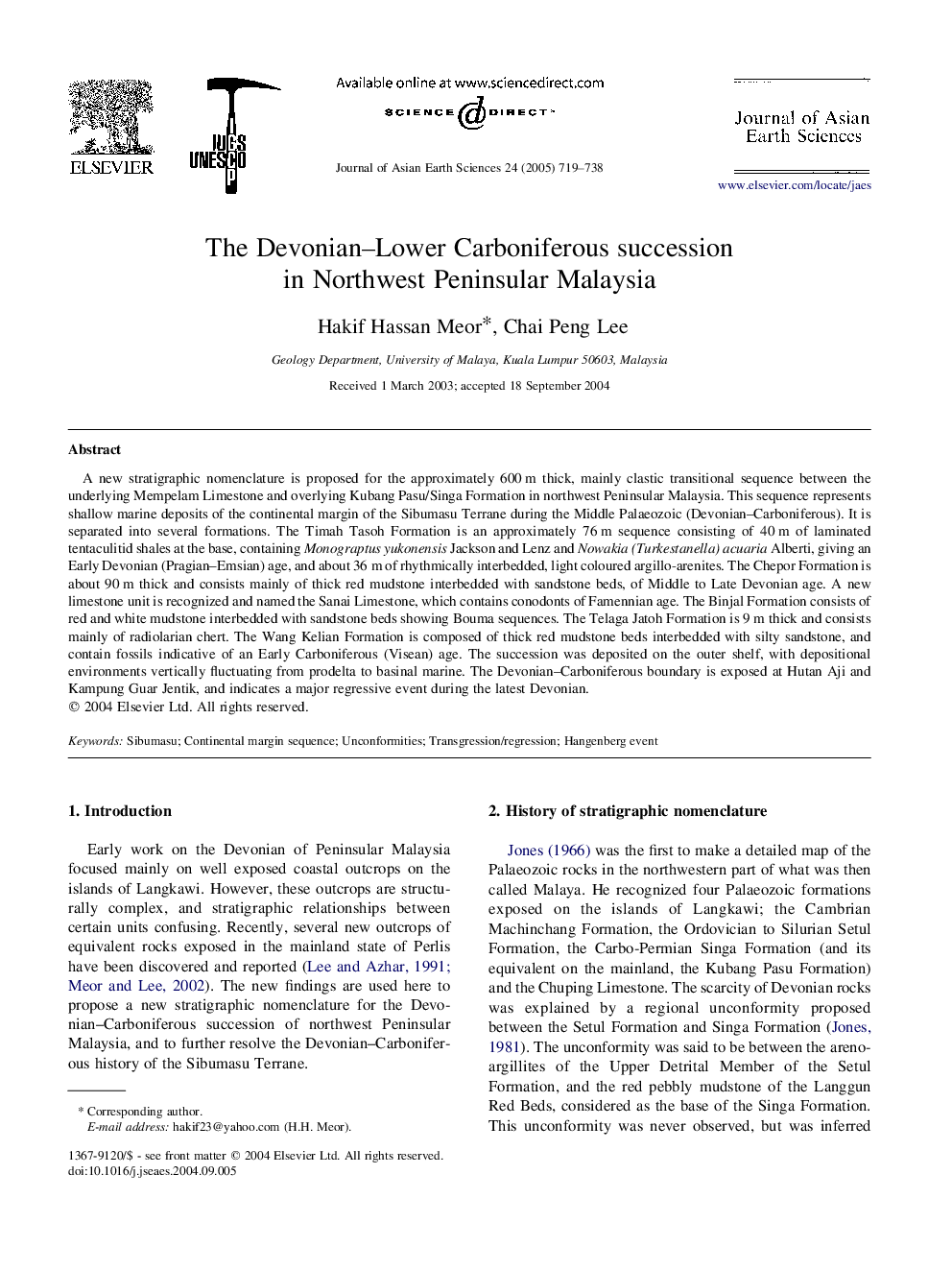| Article ID | Journal | Published Year | Pages | File Type |
|---|---|---|---|---|
| 9535690 | Journal of Asian Earth Sciences | 2005 | 20 Pages |
Abstract
A new stratigraphic nomenclature is proposed for the approximately 600Â m thick, mainly clastic transitional sequence between the underlying Mempelam Limestone and overlying Kubang Pasu/Singa Formation in northwest Peninsular Malaysia. This sequence represents shallow marine deposits of the continental margin of the Sibumasu Terrane during the Middle Palaeozoic (Devonian-Carboniferous). It is separated into several formations. The Timah Tasoh Formation is an approximately 76Â m sequence consisting of 40Â m of laminated tentaculitid shales at the base, containing Monograptus yukonensis Jackson and Lenz and Nowakia (Turkestanella) acuaria Alberti, giving an Early Devonian (Pragian-Emsian) age, and about 36Â m of rhythmically interbedded, light coloured argillo-arenites. The Chepor Formation is about 90Â m thick and consists mainly of thick red mudstone interbedded with sandstone beds, of Middle to Late Devonian age. A new limestone unit is recognized and named the Sanai Limestone, which contains conodonts of Famennian age. The Binjal Formation consists of red and white mudstone interbedded with sandstone beds showing Bouma sequences. The Telaga Jatoh Formation is 9Â m thick and consists mainly of radiolarian chert. The Wang Kelian Formation is composed of thick red mudstone beds interbedded with silty sandstone, and contain fossils indicative of an Early Carboniferous (Visean) age. The succession was deposited on the outer shelf, with depositional environments vertically fluctuating from prodelta to basinal marine. The Devonian-Carboniferous boundary is exposed at Hutan Aji and Kampung Guar Jentik, and indicates a major regressive event during the latest Devonian.
Related Topics
Physical Sciences and Engineering
Earth and Planetary Sciences
Geology
Authors
Hakif Hassan Meor, Chai Peng Lee,
